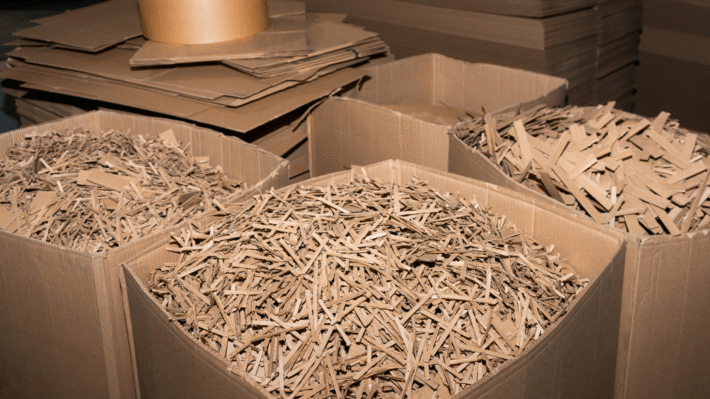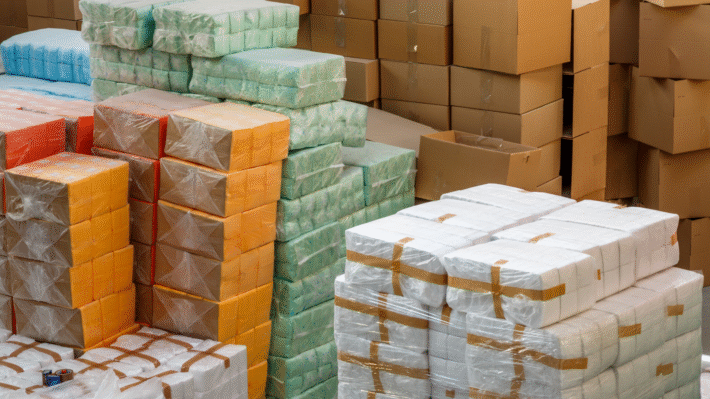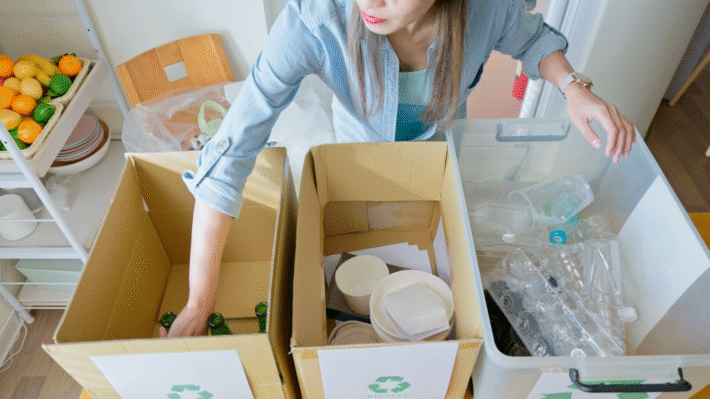Revolutionizing Agriculture by Creating Circularity in Controlled Environment Supply Chain Strategies

Welcome fellow avid learners of circularity and enthusiasts of sustainable agriculture! We’re embarking on a thrilling journey to uncover the wonders of Creating Circularity in Controlled Environment Agriculture (CEA) Supply Chain – a real game-changer in maximizing resource usage while minimizing waste, all thanks to the fascinating, relentless cycles of water, nutrients, and plant substrates! From the mastery of recycling this precious trio to the ingenious technologies like filtration systems, AI optimization, and sustainable substrates that make these cycles happen, this article will have it all. And as we weave through this rewarding expedition, not only will we demystify ‘CEA’, but also understand its significance and our dire need for sustainability in our world today! So buckle up, and let’s dive in with an open mind and ready heart━to a future transformed by sustainable farming.
Water Recycling in Controlled Environments
Just imagine getting rid of your worries about water scarcity and skyrocketing water utility bills. Sounds like a sweet dream, huh? But what if I told you it’s achievable and that the magic wand is water recycling.
Importance of Water Recycling
Benefits Over Traditional Methods
Let’s face it. Traditional farming is like a water-guzzling monster. You pour in gallons of water, and just a small portion is used by plants. The rest? It’s lost as runoff, evaporation, or percolation. But here’s the deal with water recycling. We capture every precious drop, treat it, and cycle it back to the plants. The result? Massive savings on water.
Not just that, but water recycling also gives you control over water quality. You know exactly what you’re feeding your plants. No surprises, no hidden impurities. Just pure, nutrient-rich water that your plants will love.
How Recycling Helps the Environment
But let’s not forget about our Mother Earth. The fact is, water recycling also translates to far less stress on our natural water sources. And that’s great news for our rivers, lakes, and groundwater levels.
By curbing water runoff, we also keep soil erosion in check. Plus, lesser runoff means fewer nutrients polluting our water bodies and triggering those dreaded algal blooms.
Technologies for Water Recycling
Filtration and Treatment
But you might be wondering how we clean up dirty water. Well, we use mighty filtration and treatment technologies. Filtration comes first. It’s like a bouncer at the club entry, turning away unwanted particles and impurities.
Then comes the treatment part. It’s a play of chemistry. Sometimes heat. Sometimes UV. Or maybe, even a army of beneficial microorganisms. The aim is simple. Eliminate any remaining impurities and make the water as safe as it gets.
Recovery Systems
But filtration and treatment are just half the story. The other half is about safe recovery and storage. It’s crucial to ensure zero leakages and spills, because hey, every drop counts.
Water Management Techniques
Transcending from water treatment, it’s time to discuss how the treated water is used efficiently.
Irrigation Methods
Here’s the thing. Efficient water recycling also demands efficient irrigation. Drip irrigation and micro-sprinklers are great options. They deliver water straight to the root zone, eliminating most losses through evaporation and runoff.
Rainwater Harvesting
And while we’re at it, why not capture some rain too? Rainwater harvesting is about making the best of those heavenly showers. We collect and store rainwater in reservoirs, ready for future use. With this technique, we can help reduce the pressure on natural water resources.
So, you see, water recycling in Controlled Environment Agriculture isn’t rocket science. But it’s no less powerful either. We’re talking about a sustainable, water-smart system that loves your plants, your wallet, and the planet.
Nutrient Recycling for Sustainable Agriculture
Listen up, folks, because we’re about to embark on a journey into the guts of our precious earth – a place where nutrients reign and circularity rules. We’re venturing into the fantastic world of nutrient recycling in sustainable agriculture. A world where waste isn’t waste, but rather, a vital nutrient soup that infuses energy back into our food chain.
Nutrient Cycles and Importance
Key Nutrients in Agriculture
Let’s kick off our discussion with a quick crash course on key players in agriculture: Nitrogen, Phosphorus, and Potassium. These terrific trio, are like the “healthy breakfast” for plants, vital for their growth.
Think of Nitrogen as the muscle builder. It’s essential for creating proteins and helps plants to flourish. Phosphorus is the guy in charge, it facilitates energy transfer, ensuring plants have what they need to grow and invest in offspring. And Potassium, our third wheel, is no less important. It acts as the plant’s bodyguard, safeguarding it against diseases and helping it weather the storm when conditions get tough.
Role of Microorganisms
It’s no secret that microorganisms are the unsung heroes in nutrient recycling. Imagine them as a tiny worker carrying shovelfuls of nutrient-rich material from the compost pile and scattering it around the plant roots. They play a vital role in breaking down organic matter, turning rotting plant material and animal waste into rich, fertile soil.
Nutrient Recycling Technologies
Biological and Membrane Filtration
Now, let’s journey into the heart of nutrient recycling – the technologies that transform waste into plant gold. First off, meet the humble heroes of the filtration world; biological and membrane filtration systems. They act as the gatekeepers of our ecosystem, ensuring only pure, clean water gets through, while nutrients are collected, ready to be returned to the land.
Composting Techniques
And, we cannot forget about the simple yet effective method called composting. It is nature’s way of recycling. You take bunches of organic matter, from your used coffee grounds to grass clippings, pile them up and let nature do the rest. Over time, thanks to our tiny friends – microorganisms, this pile of ‘waste’ transforms into a nutrient-rich nirvana, perfect to infuse life back into the earth.
Effective Nutrient Management
Precision Farming
Effective nutrient management is like finely tuning an instrument. Each note must be in harmony. Precision farming enters the scene here. Getting the right nutrient, at the right time, in the right place, in the right amount – that’s the symphony we’re orchestrating here folks. It’s farming at its smartest.
Using AI for Optimization
But, wait. There’s more! Artificial Intelligence is stepping forward as the new maestro commanding this symphony. Algorithms are now able to compute the perfect amount of nutrients, water, light – you name it, to give us maximum yield with minimum waste. Seems like the new age farming is here, and it wears a digital cloak!
So, there you have it. From the microscopic bugs beneath our feet to the cloud-based algorithms in the sky, we’ve journeyed through the circular economy of nutrient cycling in agriculture. It’s evident that the tools and tech we need to build a sustainable agriculture ecosystem already exist – it’s just up to us to put them into action.
Recycling Plant Substrates
The agricultural sector is looking towards a new horizon, a green revolution if you might, with eco-friendly techniques taking precedence. Amidst these promising developments, recycling plant substrates has marked its significance in controlled environment agriculture (CEA). This article will explore what plant substrates are, and how their recycling is envisaged as a potent game-changer in future agriculture.
Understanding Plant Substrates
Let’s start with the basics. Plant substrates are materials that support the growth of plants, allowing roots to anchor themselves and providing necessary nutrients and moisture.
Purpose and Types
Plant substrates, also referred to as growth mediums, serve a dual purpose. Firstly, their physical properties provide an optimal environment for root growth and plant anchoring. Secondly, their nutrient composition plays a fundamental role in nourishing the plant. Common types of substrates include soil, coconut coir, peat, perlite, and vermiculite.
Non-biodegradable substrates such as rockwool and plastic mulch are also used extensively due to their specific benefits. However, they pose significant challenges when it comes to waste management and sustainability.
Issues with Non-Biodegradable Substrates
Despite their advantages, non-biodegradable substrates are a double-edged sword. Their resilience, while beneficial for plant growth, also means they do not break down easily after use. As a result, they accumulate in the environment, leading to unnecessary waste and potential pollution.
Technologies for Substrate Recycling
Acknowledging these issues, scientists and innovators have turned their efforts towards developing technologies that can effectively recycle plant substrates.
Biodegradable Options
Biodegradable substrates, such as coconut coir and peat, present an excellent alternative to non-biodegradable ones. Once their usefulness as substrates ends, they disintegrate naturally without producing any harmful waste or clogging landfills. They’re a natural choice for those aiming towards sustainability.
Recycling and Regeneration Methods
A variety of recycling and regeneration methods have been developed for both biodegradable and non-biodegradable substrates. This includes composting used substrates, heat sterilization, and chemical treatment. These methods ensure the substrate can be reused, minimizing waste and maximizing their value.
Impact of Substrate Recycling
The influence of substrate recycling extends far beyond waste management, contributing to economic efficiency and environmental sustainability.
Reducing Waste and Costs
Implementing substrate recycling can significantly reduce waste, meaning less energy is needed for waste transportation and less space is needed for waste disposal. This, in turn, can lower costs for farmers and reduce the overall environmental footprint of agriculture.
Promoting Sustainability
Promoting the use of biodegradable substrates and improving recycling methods for all types of substrates is an essential step towards sustainability in CEA. By taking steps to recycle substrates, we can create a more closed-loop system where resources are used more efficiently, contributing to the bigger goal of sustainable agriculture.
Plant substrate recycling is not just a niche concept of interest for environmental enthusiasts. It signifies a major leap towards a future where agriculture coexists harmoniously with nature. Embracing this concept does not only offer a solution to environmental concern, but also paves the way for a sustainable, efficient, and resilient agricultural system.
Integrating Closed-Loop Systems
The magic of creatively turning waste into wonders in Controlled Environment Agriculture (CEA) hits its peak with the incorporation of closed-loop systems. From farm to fork and back to farm – that’s the cycle we’re weaving in these architectures. It’s all about creating zero-waste systems while optimizing resources and fostering unity in communities.
Creating a Zero-Waste System
In CEA, we’re all about turning wastes into boons. This is our marching order in favor of our planet, aligning our efforts towards creating a zero-waste system.
Resource Integration
At James Farm, an exemplary CEA performer, they treat output waste as potential inputs. Stems, leaves, and roots – nothing is trash. For instance, discarded plant parts are gathered, composted, then brought back as nutrient-rich substances into their garden beds. They’ve turned their farming cycle into a loop, taking the output back to the start, enhancing the productivity of their system.
Examples of Successful Systems
Innovator George’s Greenhouse showcases another successful example of closed-loop systems. It’s not your typical greenhouse, but a shrine of sustainability. They’ve smartly integrated their fish and plant systems, capping off their waste game. The fish water, brimming with ammonia, is used to feed the plants. The plants, in return, filter and clean the water before it’s returned to the fish tanks. It’s an integrated win, a true embrace of the circle of life!
Enhancing Energy Efficiency
A well-planned CEA blueprint doesn’t just focus on waste. It’s also about squeezing value out of every energy unit used.
Optimizing Resources
CEA priority isn’t just about producing more; it’s about doing more with less. Reduced water usage, lesser land needs, and optimized energy usage, we’re slaying the productivity game and conserving resources at the same time. We thrive on efficiency.
Improving Energy Use
CEA spaces are built to capitalize on natural elements. We lean on the sun for warmth, wind for ventilation, and we harness the rain. With the right technology, like solar panels, we can trap and store solar energy for nighttime use or gloomy days.
Encourging Collaboration
CEA isn’t a lone wolf’s job. It’s an orchestra of different skillsets, mindsets, and communities coming together.
Working with Local Communities
CEA success isn’t just measured by harvest yields. It’s also about nurturing relationships within the community. At Mike’s Mushroom, they employ locals, offer workshops, and share their abundant harvest with the neighborhoods. They’re not just growing plants; they’re fostering community bonds.
Fostering Partnerships
CEA also opens up an arena for like-minded groups to collaborate. Government units, non-profit organizations, schools, and CEA farms can band together for sustainability drives, grants, and education programs.
After all, narrating a successful CEA story is more than just about yields. It’s about intertwining the stories of plants, people, and our planet. It’s a shared victory – A CEA victory.
Facing Challenges and Embracing Opportunities
Let’s not pretend it’s all a rosy path. We gotta face the truth, that the road to achieving circularity in controlled environment agriculture (CEA) is sprinkled with a hefty amount of challenges. But hey, what’s a journey without a few bumps and hurdles, right?
Common Challenges in CEA
Financial and Technical Barriers
Let’s get real! Setting up a controlled environment agriculture system doesn’t come cheap. It involves capital costs for specialized equipment, endless tech, training, and routine maintenance. Besides, you gotta be techie savvy or have folks who can handle the nitty-gritty of complex systems! Hold onto this truth, buddy… it’s not a walk in the park!
Maintaining System Balance
Striking balance in a controlled environment farming system is kinda similar to walking a tightrope. Too much or too little of anything – light, humidity, nutrients, or water – can muddle up the whole batch. Plus, dealing with any waste or fluctuations in the system’s harmony? Now that’s a head-scratcher!
Opportunities for Innovation
But hey, it’s not all hardships and heartbreaks. CEA also opens a Pandora’s box of incredible opportunities.
Advancements in AI and IoT
Fancy TALKING to your plants and them talking back? Or knowing your crop’s water and nutrient needs without even lifting a finger? Well, thanks to the wonders of artificial intelligence (AI) and the internet of things (IoT), that’s now a reality! There’s a whole new world of data-driven farm management just waiting to be explored.
Exploring New Substrates
When it comes to substrates in CEA, think beyond just soil! From coconut coir to peat moss, vermiculite to perlite, there are a bajillion alternatives waiting to be discovered. And guess what? Each of these substrates can bring a unique edge to your crops and transform how you farm.
In short, whether it’s facing challenges head-on or harnessing opportunities, always remember this simple rule – when it comes to CEA, keep your mind open and your spirits high!
Looking Forward: The Future of Sustainable Agriculture
It was Benjamin Franklin who wisely quipped, “an investment in knowledge pays the best interest.” With his words ringing true to this day, we pivot to the future of sustainable agriculture. A future that hinges on understanding, innovation, and above all, action.
The Role of Policy and Investment
The face of agriculture is evolving, thanks in no small part to the greater role both policy and investment are playing in shaping its landscape.
Developing Supportive Policies
Gone are the days where one could overlook the damaging impact of careless farming practices on our planet. Enter, the era of supportive policies. These are the guidelines, rules and regulations that control how we grow our food and feed the world. They can either accelerate our move towards sustainable agriculture or hinder it.
Consider, for instance, the policies around water conservation and usage. Smart legislation can encourage recycling of water, minimize wastage, and promote controlled environment agriculture (CEA). This kind of legislation doesn’t just benefit large-scale farmers but also nourishes the roots of smaller ones, fostering a healthy, thriving ecosystem for all.
Encouraging Investment
The shoot of sustainable agriculture also needs the watering can of investment to truly bloom. By investing in innovative technologies and circular practices that maximize reuse and minimize waste, sponsors can play a critical part in pushing forward the boundaries of what’s possible in farming.
Investments in research, developing and scaling new technologies like AI and IoT in farming, and demonstration projects can influentially shift gears and kick-start a revolution in sustainable agriculture.
Embracing Regenerative Agriculture
What if, instead of just reducing harm, we can create a system that regenerates and revitalizes the earth? One that heals the planet while ensuring a plentiful harvest? That’s the golden promise of regenerative agriculture.
Scalability and Impact
Regenerative agriculture is about more than just a few patches of green. It’s a scalable solution that could radically change the face of farming worldwide. It’s about closed-loop systems that recycle water, nutrients, and substrates. It’s about moving away from synthetic, damaging pesticides and stepping towards organic, beneficial ecosystems.
But most importantly, it’s about understanding that high yields shouldn’t come at the price of the planet.
Driving Change through Advocacy
Finally, none of this change happens in a vacuum. Advocacy is the engine that drives policy and investment in a direction that supports sustainable, regenerative farming. By spreading the word, lobbying for change, and making the benefits of controlled environment agriculture known, we can all play a part in writing the next chapter of agricultural history.
Take it from Franklin. The best investment we can make is in the future of our planet. And there’s no better time than now to start acting. Because with every seed we sow today, we’re deciding the kind of harvest we’ll reap tomorrow.
One comment
Comments are closed.




[…] These crops also provide yield stability. This means they keep giving us food, no matter what the weather is like. Farmers and scientists work together to make these crops better. This means they are always finding new ways to protect food supplies. […]